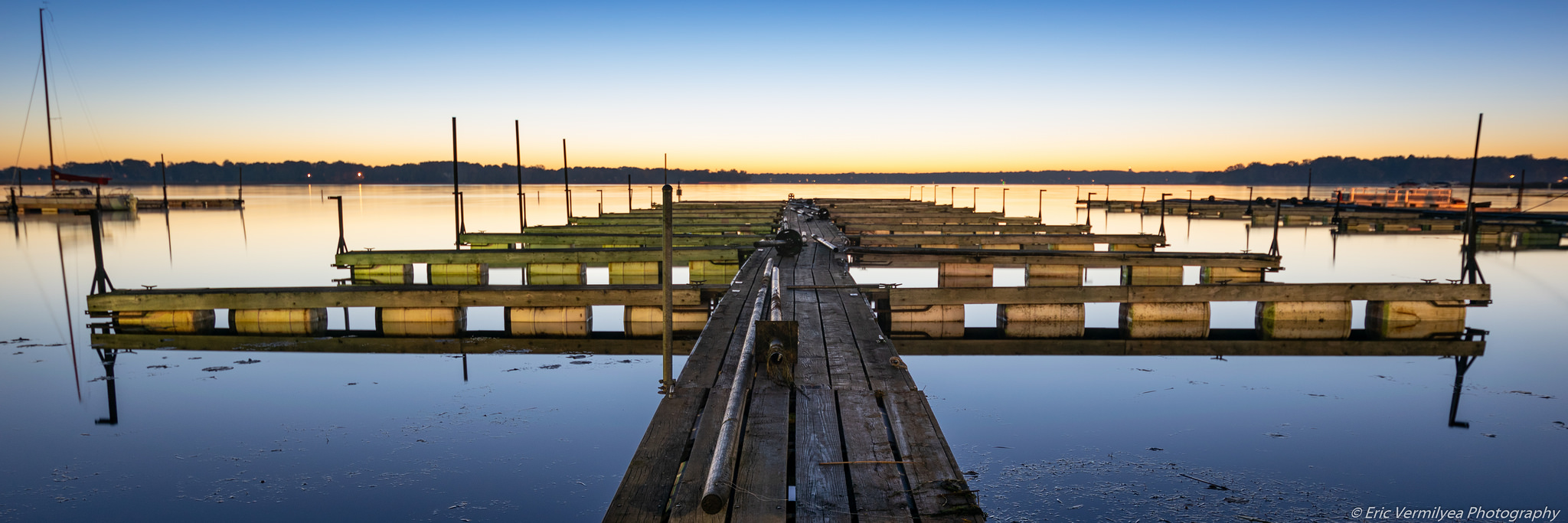WHITE BEAR LAKE CONSERVATION DISTRICT
LAKE MANAGEMENT PLAN
MAY 1999
White Bear Lake is an invaluable community resource. White Bear Lake is located in an urban metropolitan area that contains hundreds of lakes, most of which have been affected by pollution and other pressures of urbanization. White Bear Lake is different - its aesthetic, recreational, commercial, and environmental qualities have largely withstood the pressures of modern life and has retained many of its historical qualities.
White Bear Lake represents one of the few opportunities to protect rather than restore those features that make it such a valuable natural asset to the community.
This has not always been the case. The quality of White Bear Lake was poorer at a time before central sewer service was provided to the surrounding communities (see Appendix I). Improvements to the lake following the installation of sanitary sewer service to the surrounding communities except, Dellwood, demonstrates two important points: 1) that the quality of White Bear Lake will suffer when pollution increases and 2) protection efforts result in positive improvements.
Despite its remarkable condition today, there are concerns that the value of White Bear Lake may be threatened. Increasing user conflicts, overdeveloped lakeshore, the introduction of exotic species, pollution from runoff and significant lake level fluctuations are frequently mentioned by those who use and value this beautiful lake. A larger threat is the increasing population in the watershed of White Bear Lake that will intensify impact of the other concerns.
Until now, there has been no comprehensive plan or overall strategy to manage and protect the value of White Bear Lake.
This management plan represents a community-wide effort to assure that appropriate investments are made to protect the value of White Bear Lake now and into the future.
This is accomplished here by:
- Seeking broad input as to what aspects of White Bear Lake and its environs are valued by the community as well as learning which of these might be threatened.
- Comparing these values and concerns with biological, chemical and physical data to gain a quantitative assessment of areas requiring management attention.
- Identifying goals to support a community vision for White Bear Lake.
- Evaluating strategies and actions that will meet those goals.
- Recommending specific actions to protect White Bear Lake.
WHY THE WBLCD NEEDS A MANAGEMENT PLAN
The WBLCD is a public policy-making agency with responsibilities that involve multiple uses of White Bear Lake by the public, businesses and the surrounding communities. Multiple users with varied interests create complex challenges for the WBLCD Board. The Board’s agenda includes predictable activities each year as well as special events or situations that require action. To provide a stable management environment, a lake management plan is essential for several reasons:
- A lake management plan will provide continuity and a context for the District’s activities through the normal succession of our membership. Likewise, each season brings recurring or unanticipated concerns and activities which can be better managed in the context of a management plan.
- The WBLCD can become a more effective partner with other individuals, organizations and agencies who have an interest in or responsibility for the management of White Bear Lake.
- The management plan will provide an annual retrospective, in which the programs and policies of the Board can be objectively evaluated and improvements can be made in a systematic and timely way.
Overall, this plan will enable the WBLCD Board, our member cities and others to gauge our progress and accomplishments as well as chart future needs as we work to protect White Bear Lake on behalf of our community.
THIS PLAN
The White Bear Lake Conservation District has adopted this management plan, thereby making a commitment to implement the actions it prescribes. The White Bear Lake Conservation District will do this either directly through its plans, programs and projects, or indirectly through its advocacy role.
The White Bear Lake Conservation District recognizes that modifications and improvements are always possible and will seek and welcome this input to make sure White Bear Lake remains an asset to our community.
THE NEED
The White Bear Lake Conservation District, or WBLCD, is responsible for coordinating the overall management of White Bear Lake. At the same time, the WBLCD recognizes that many other agencies, organizations and individuals have a role in the lake’s management. To understand the range of management issues and most effectively coordinate the total management effort, the WBLCD has commissioned the development of this management plan.
PLAN DEVELOPMENT
The WBLCD retained Dick Osgood of Ecosystem Strategies to facilitate the development of this management plan. The planning model used here is consistent with Developing a Lake Management Plan (ILCC 1996) and Developing and Implementing a Management Plan (Osgood in prep.).
The year-long planning effort was coordinated by the Steering Committee comprised of two WBLCD Board members. The substance of this plan is largely the result of input from an Advisory Committee, a stakeholder sounding board, with technical guidance from a Technical Committee (see Table 1).
Work Plan
The year-long work plan for developing this plan occurred in three phases:
Phase I (May - July 1998). Hold initial Steering Committee meetings, prepare an assessment of lake condition, implement community survey, empanel Advisory and Technical Committees.
Phase II (August 1998 - January 1999). Conduct Advisory Committee meetings, seek input from Technical Committee, seek agreements on substantive aspects of the management plan, draft the management plan.
Phase III (February - April 1999). Prepare a final draft of the management plan, deliver the plan to the WBLCD, facilitate adoption by the WBLCD.
Preliminary Assessment of Lake Condition and Community Needs
During the first phase of the plan development, a summary of the lake’s physical, chemical, biological and social condition was prepared. At the same time a community survey was conducted. Both assessments were compiled into a report titled, Report on the Condition of White Bear Lake, which is included in Appendix I. This report was the basis for the initial discussions of the Advisory Committee.
The Steering Committee
The Steering Committee consisted of two directors of the WBLCD Board who provided general oversight, coordinated the planning process and served as liaisons between the WBLCD and the community at-large - and were responsible for guiding the overall conduct of this plan’s development.
The Advisory Committee
The Advisory Committee adopted this charge at their first meeting:
The Advisory Committee will work with Dick Osgood of Ecosystem Strategies and the Steering Committee to develop a management plan for White Bear Lake. Once the management plan has been drafted, the Advisory Committee will present the plan to the White Bear Lake Conservation District and recommend its adoption.
The Advisory Committee performed its work in a series of formal committee meetings (see Appendix II) during the second phase of the work plan. The Advisory Committee completed its work by formally recommending this plan’s adoption by the White Bear Lake Conservation District.
The Technical Committee
The Technical Committee provided technical oversight and guidance to the Advisory Committee. The Technical Committee performed this function mainly through input following specific requests from the Advisory Committee and on an ongoing basis.
Community Input
There were numerous opportunities for community input to the development of this plan. As with any public process, the extent of public interest is not always directly related to ‘hard’ responses to surveys or physical attendance at meetings. Nonetheless, it is critical to the successful implementation of this management plan that anyone in the community who uses or values White Bear Lake be given the opportunity to have their concerns and interests heard. The Steering and Advisory Committees believe that ample opportunities were given during the development of this plan. The Steering and Advisory Committees believe that ongoing community input is important as well.
Opportunities for community input during the development of this plan included:
- Public notification of every Steering Committee, Advisory Committee and Technical Committee meeting was published in the White Bear Press.
- White Bear Lake Conservation District monthly board meetings. Throughout the year-long plan development, status reports were given at all regular WBLCD Board meetings. These reports always included public invitations for community input. In addition, all inquiries stemming from these reports were followed up.
- Community Input Survey. The survey was sent to 132 people representing the White Bear Lake Conservation District, city and town council members, mayors and staff from communities around the lake, Board members from the White Bear Area Chamber of Commerce, members of the White Bear Lake Homeowners Association, members of the White Bear Preservation Coalition, representatives of dock associations, representatives of area businesses, and anyone requesting a survey following a notice in the White Bear Press.
- Advisory Committee members were invited from survey respondents and others who were identified by the survey respondents as people that might be interested in serving. In addition, several municipalities appointed representatives. The Advisory Committee accepted several new members who came forward after it had been empaneled. All community members and interested parties attending the Advisory Committee meetings were welcomed by the Committee. Indeed, they were free to participate and, space permitting, they were invited to sit at the main table.
- Mailing List. All work products prepared during the development of this plan were mailed to the Advisory and Technical Committee members (see Table 1), the White Bear Lake Conservation District Board and staff, reporters from the White Bear Press and the Saint Paul Dispatch Pioneer Press, mayors from the five municipalities around White Bear Lake, and anyone else requesting they be included on the mailing list.
- Media reports that generated expressions of interest or concern were addressed by a direct response, by including the person on the mailing list, by inviting their participation on the Advisory Committee, or all of these.
- Consultant’s role as information officer. The planning consultant solicited and received comments from residents and others unable to attend or otherwise participate in Advisory Committee meetings. The consultant presented all such comments to the Advisory Committee. As well, the consultant convened meetings of the Technical Committee.
- Steering Committee. The Steering Committee presented updates of the management planning process and work products to local municipal councils and boards through oral presentations and newsletter reports. As well, the Steering Committee published a letter in the December 29, 1998 White Bear Press.











